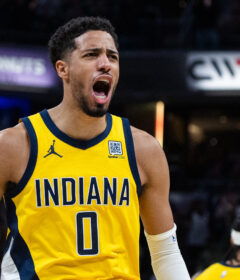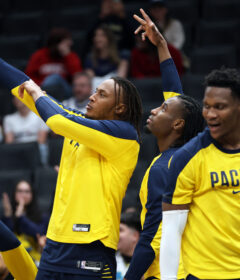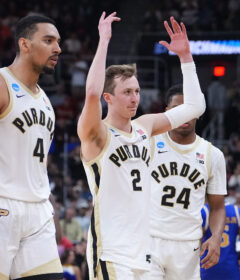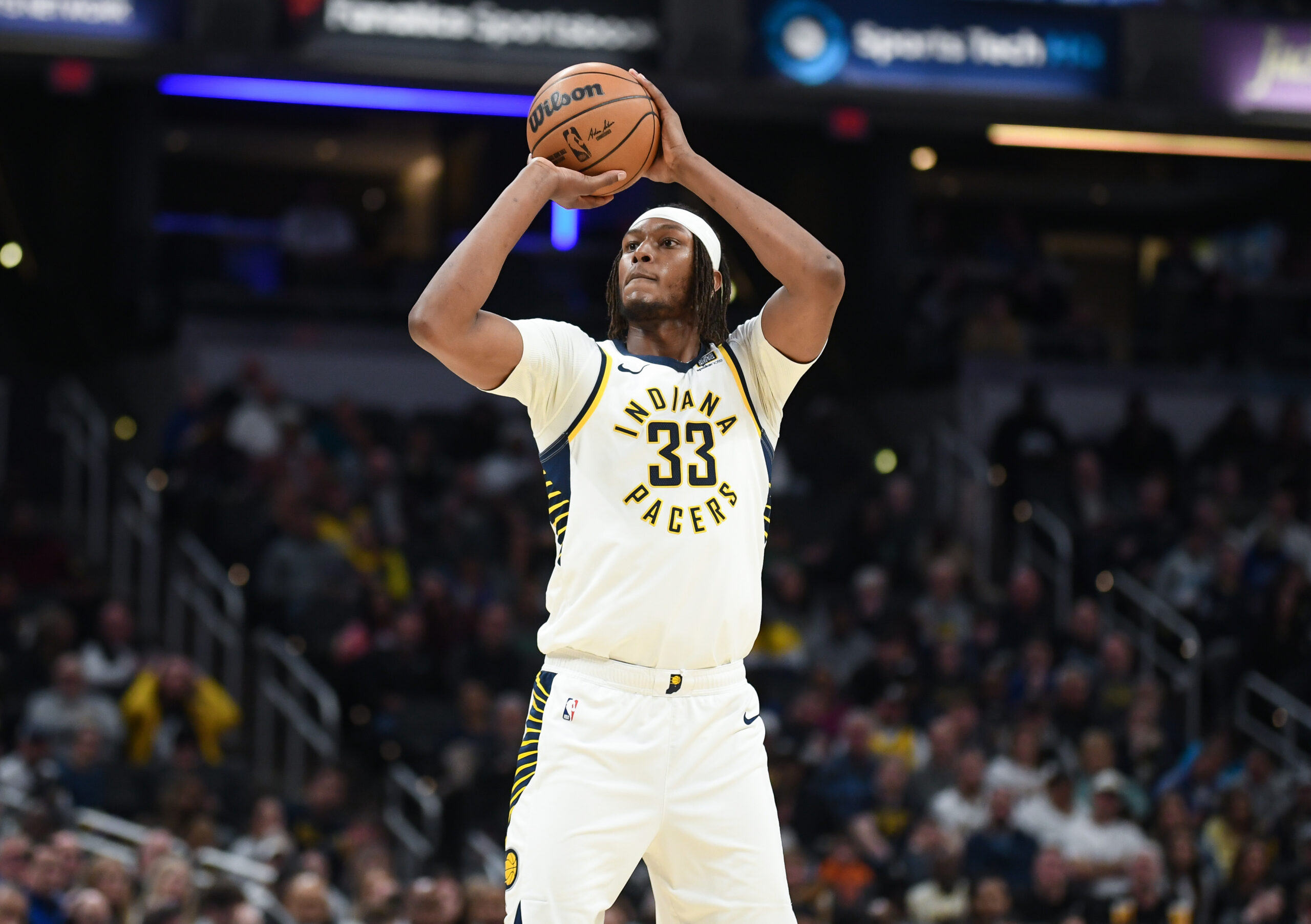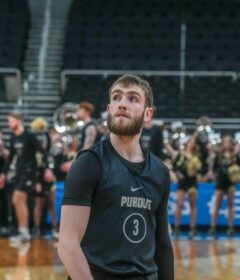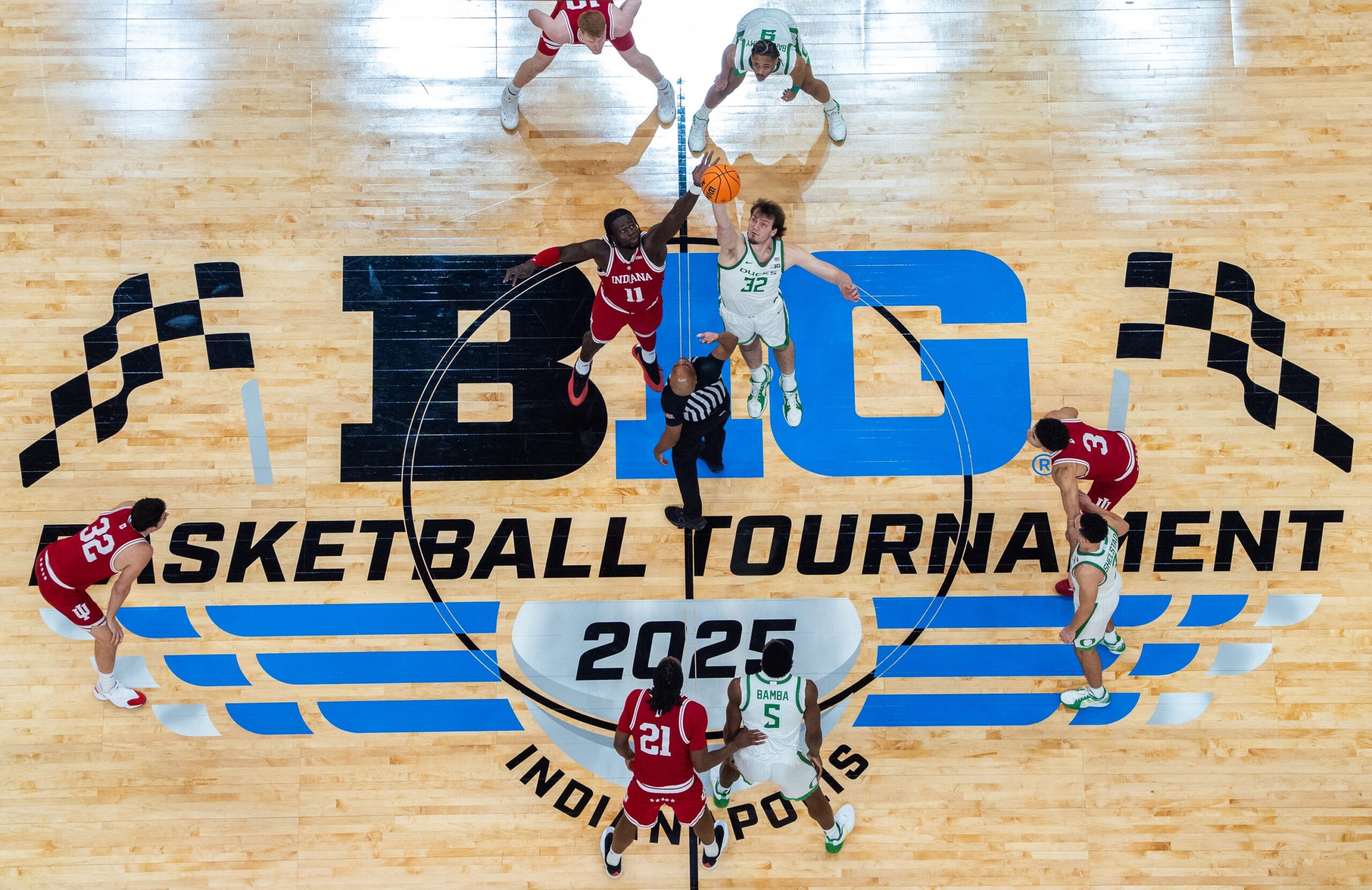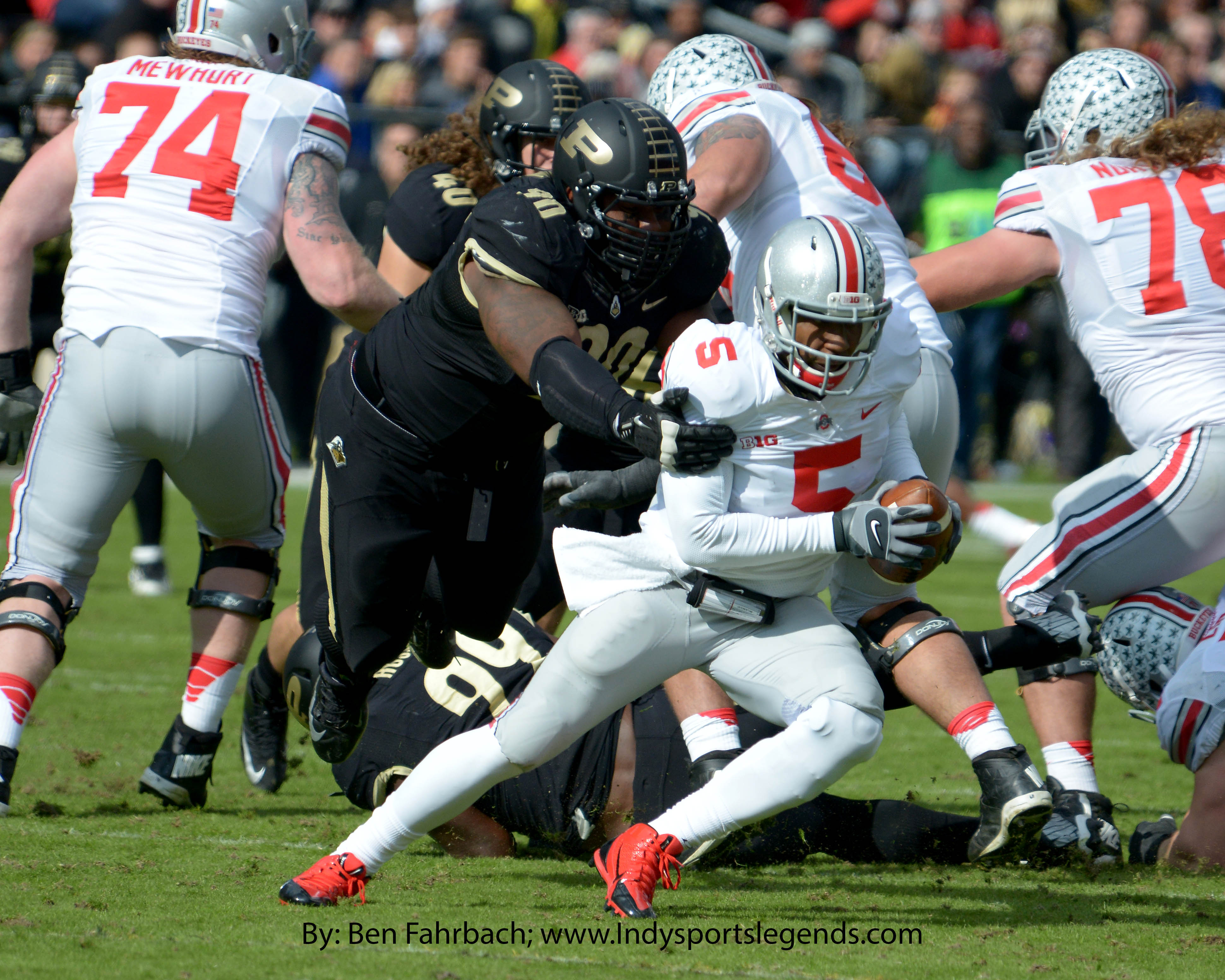
By J.W. CALINGER
ISL Correspondent
Every once in a while, we’ll see a team that’s barely getting by, winning a number of close games despite a glaring weakness or two, and staying alive in the hunt for a championship or playoff spot, only to have their luck run out because a team finally takes advantage of the weakness and knocks them out of the race. This year, it was Ohio State.
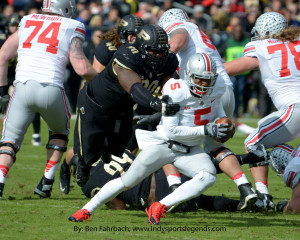
At the end of last season, the Buckeyes came out on top, despite having their top two quarterbacks out due to injury. With Braxton Miller injured before the season began and JT Barrett injured against Michigan, third-stringer Cardale Jones quarterbacked Ohio State to a rout in the Big Ten Championship that earned them a spot in the playoffs and, eventually, to a national championship.
Ohio State coach Urban Meyer was in the rare but enviable position of having too much talent at the quarterback position. His solution was to move the returning Miller to wide receiver and, after the offseason, to declare Jones the starter, bringing Barrett into the game occasionally.
Though the season opener against Virginia Tech started out ugly, the final score was respectable, a 42-24 win against the only team who defeated the Bucks in 2015. The next game against Hawaii, a 38-0 rout, made fans more optimistic. Then, the games started getting closer. Ohio State beat Northern Illinois and Indiana by a touchdown each, and didn’t start to pull away against Maryland until the third quarter. They beat Minnesota by only two touchdowns. To be sure, things appeared to improve after JT Barrett became the starter after playing Penn State; Ohio State beat Rutgers 49-7 and Illinois 28-3. Still, the weaknesses on offense were there, and the Buckeyes fell to Michigan State thanks to a last-second field goal.
Here is the field goal, courtesy of Big Ten Network:
In “The Book of Five Rings”, Miyamoto Musashi noted that learning one school of swordsmanship would never be enough – a really good samurai needed to learn them all. Football is full of examples of schools who had one style of offense, falling to a team that could stop that attack, because the offense had no Plan B. Nebraska fans no doubt remember the 2010 Holiday Bowl, during which Washington avenged a 56-21 regular-season loss by defeating the Huskers 19-7. The Huskies learned how to stop the Huskers’ zone-read, and Nebraska had no Plan B.
Like the zone-read offense, Ohio State’s offense is deceptive to the casual viewer. Most of the formations are shotgun or pistol; I’ve seen them line up once under center, for a quarterback sneak. Most have four wide receivers, or three, with a tight end lining up as an H-back. Even a pistol formation, which guarantees the running back more downhill momentum, is rare, as is a two-back formation. This implies a passing team. In fact, though, the Buckeyes are very run-based, with the running generally split between quarterbacks Barrett and Jones, running back Ezekiel Elliott, and wide receivers like Miller who go into motion for a fly sweep. Aside from the wide receivers, no doubt meant to spread the coverage, it’s closer to the Wildcat or single-wing formation than most fans understand.
Decades ago, teams moved away from the wishbone, double-wing, and I-formations, because a running quarterback made it too difficult to make a large comeback. Passing becomes very necessary when behind by more than a touchdown. Eventually, teams moved to the spread offense that gave Oklahoma a national championship, Hawaii an undefeated season, and very nearly granted similar benefits to the likes of Missouri and Texas Tech.
As opposing defenses learned to defend against the pass, coaches began to introduce a new wrinkle, a run-first offense that took advantage of a spread-out defense. Meyer, for his part, brought Utah some national attention, after which he went to Florida and had Tim Tebow take the Gators to a national title. After a break for health reasons, he went to Ohio State, and the rest is history.
In a fascinating way, the circle is complete. The formations are different, but the weaknesses are the same. Opposing teams could crowd the line of scrimmage against power-run teams, allowing less coverage in the secondary because the opposing quarterbacks might not be able to get his receivers the ball. It was true against Tommie Frazier, at least during his first two years as a Husker, and it’s true against JT Barrett. The one way to make an opposing defense stop crowding the line is to make them pay, by burning them on a long pass or by turning a quick pass to a hot read into touchdowns or 40-yard gains. The Buckeyes, in general, have had a rough time doing that, especially given the understandable tendency of the quarterbacks to return to what they knew.
Braxton Miller is a senior, and he was very wise to move positions, given that he’s more likely to be drafted or, at least, signed if he at least has learned the position. Jones tweeted that he won’t return, though his prospects in the NFL, given his stats this year, are significantly less. Elliott, at this point, doesn’t want to return either. Barrett will be back, but if he doesn’t learn to throw, or if he’s injured again, what Meyer will do is anyone’s guess.
My guess is that Meyer will keep doing what he’s doing. He shares an attribute of many great coaches, that he’s somewhat unwilling to tweak or to adapt his offense. Some of that is understandable, given the overall success he’s had with the scheme he has. Still, it’s possible, at the very least, that because of the unwillingness at least to tweak the offense a little, Ohio State fans have to consider the chance that Michigan State, Michigan, or even an upstart team will learn to stop the Buckeyes scheme again, at which point Meyer again will not have a Plan B. Musashi would disapprove.
Related Posts
- Sanders: Looking back at Ohio State’s stunner over Wisconsin
- Griffiths: Media picks Ohio State to win Big Ten
- Griffiths: What you need to know about Big Ten football
- Griffiths: Ohio State, Wisconsin, Nebraska in mix for Big Ten title
- Griffiths: Alabama rules in early preseason college football Top 25
- Notre Dame focused on avoiding a letdown
- Purdue’s Winning Streak Snapped at 19
- Ben Fahrbach’s Michigan State-Ohio State slideshow
- Big Ten sends seven schools to bowl games
- Griffiths: Final regular-season Big Ten picks

